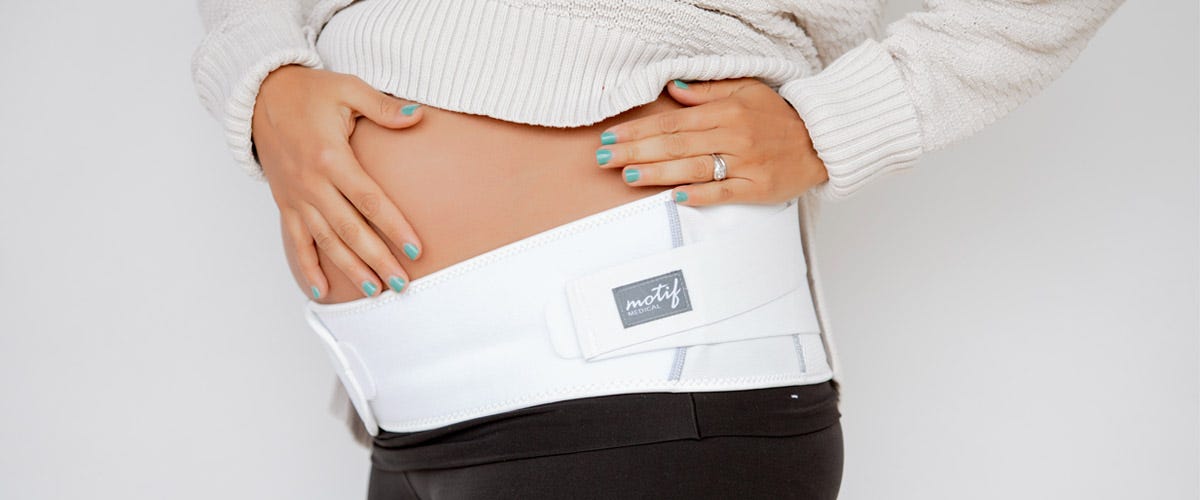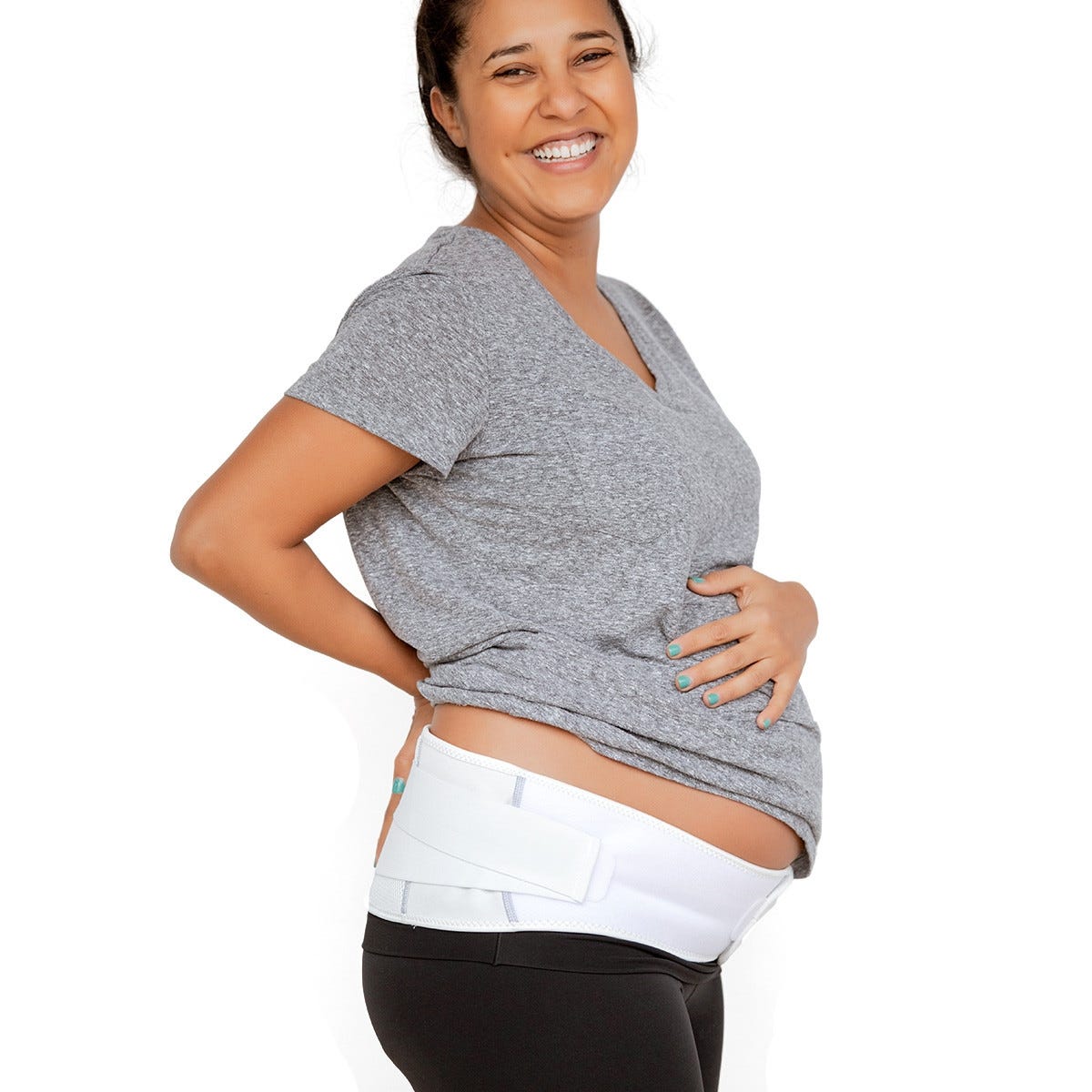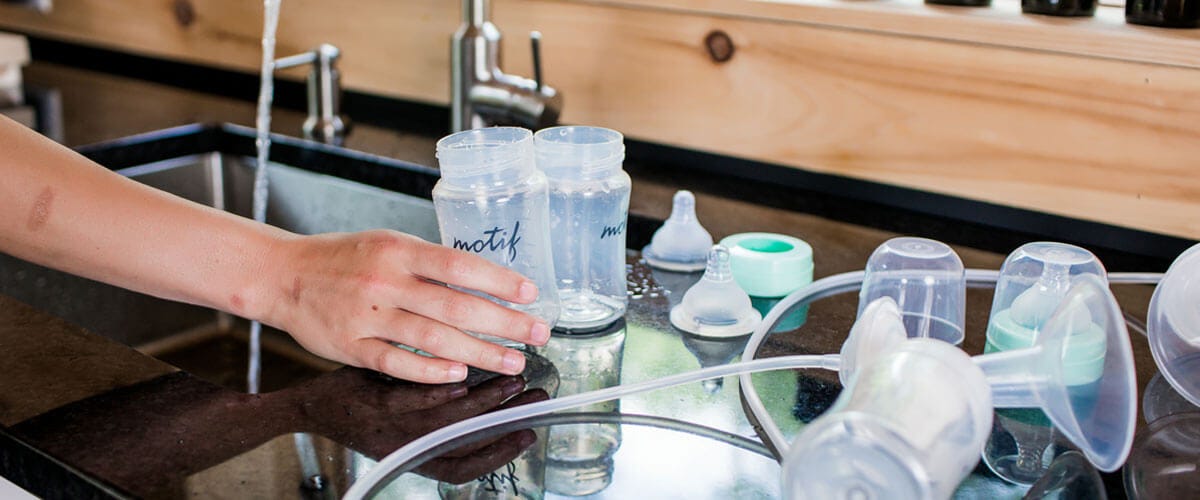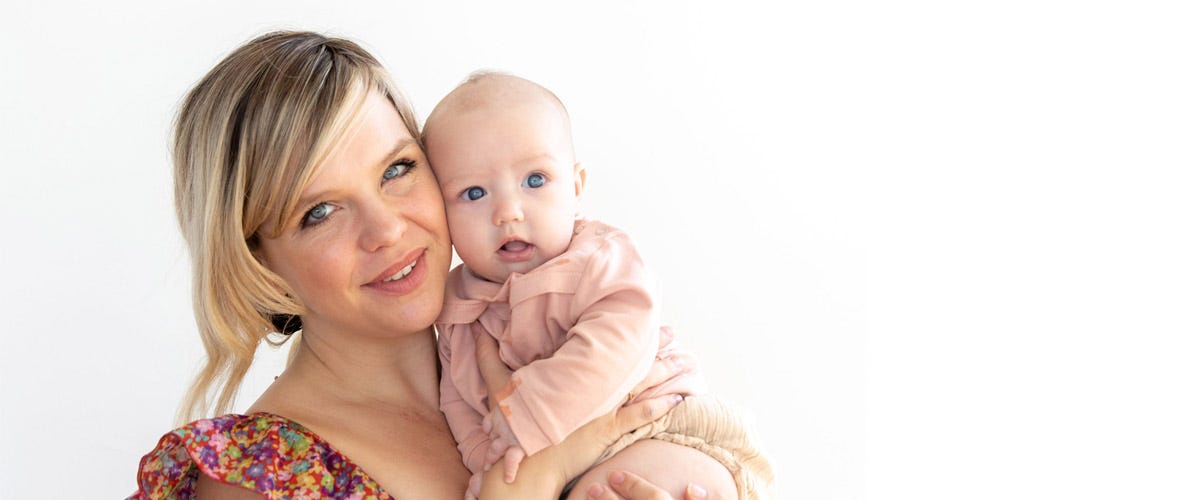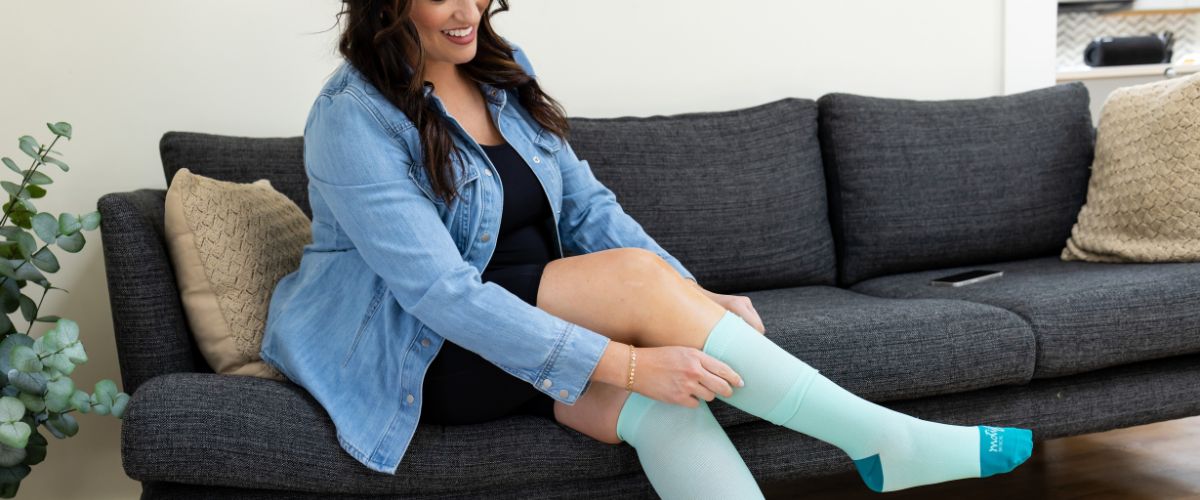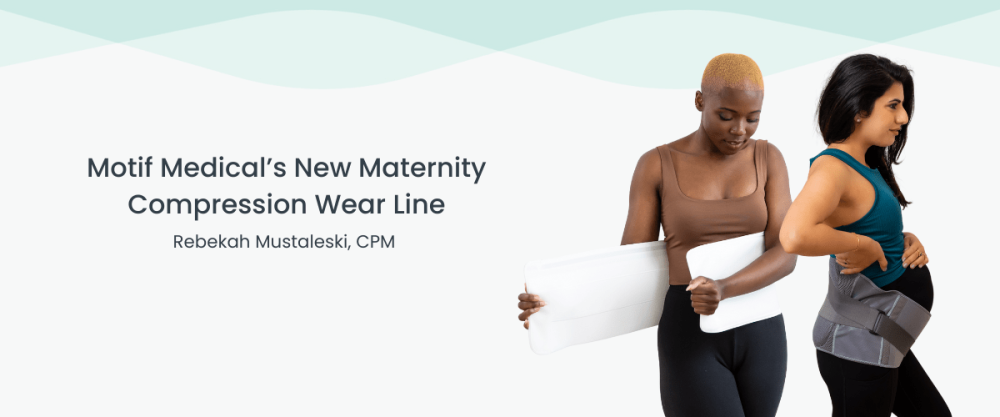Pregnancy is such a fun and exciting time for a family! There are so many new things to learn about, new sensations that you’ll feel, and your baby’s body is developing new parts and systems every day. But what about the changes happening to your body? Pregnancy can change your posture, your balance, and put additional pressure on your joints and pelvic floor–all of which increase the workload of your muscles and ligaments.
Wearing a pregnancy belly band can be a great way to keep feeling your best while your body is growing a baby.
There are many benefits to wearing a support band, sometimes referred to as a maternity belly band, maternity belt, or pregnancy belt. Pregnancy support bands are different from belly wraps or waistband extenders. A high-quality band is designed to provide gentle compression and the extra support you need as your body changes. Maternity compression can be especially helpful if you are dealing with pelvic girdle pain, lower back pain, or if you have diastasis recti, but even for a normal, healthy pregnancy it can be useful.
During pregnancy, your body releases a hormone (relaxin) that relaxes and loosens your ligaments, making them stretchy and your joints less stable. A growing belly and looser connective tissue–sounds like a great combination, right? Not so much, which is why a pregnancy belly band can be a huge help! It can help stabilize your pelvis, improve your posture, help your baby get in a better position for delivery, and put you one step ahead in your postpartum recovery.
A pregnancy support band is made of stretchy, breathable fabric with a velcro closure and adjustable straps on the sides so it can grow with your pregnancy. It sits under your growing belly to provide extra support to your muscles and ligaments. Wearing the maternity belt for a few hours each day starting around 20 weeks can help you feel your best throughout the pregnancy. Let's walk through a few of the benefits of wearing a maternity belly band.
Maternity Belts Reduce Pregnancy-Related Aches and Back Pains
As your baby grows, the weight of him or her pulls forward on your abdomen, creating what your healthcare provider may call “lordosis of pregnancy” - which basically means there is increased curvature of the lower back. This additional curvature in the spine can cause lower back and pelvic girdle pain, particularly in the sacroiliac (SI) joint. In fact, lower back pain is reported by 71% of pregnant women¹ and up to 20% report back pain at three years postpartum². A soft, breathable maternity support band can provide an all-natural remedy, and some studies have found it more effective than other options for some of the most common aches and pains³.
Keeping good postural habits and a strong core is the first step to avoiding the pain associated with this spine curvature. But it’s really normal for your core muscles to get tired – especially in the second and third trimesters and especially if you are on your feet a lot. The tendency is for our bodies to settle into a slouch when overly strained. A maternity support belt will fit across your lower back and abdomen, providing belly support and compression, which gently prompts your body to keep proper posture throughout the day. Much of our posture is habitual and by avoiding poor posture during pregnancy, you can keep help minimize SI joint and round ligament pain, keep your spine properly aligned and your abdominal muscles strong in preparation for delivery and postpartum.
Better Posture → Better Position for Baby
Maintaining good posture will not only help you feel your best, it will also help you and baby prepare for childbirth. Throughout your pregnancy and even during the postpartum, you and baby are a team, working together to accomplish a common goal. One of those goals during pregnancy is for a baby to get into a good position for birth. We want the baby to be head down, with his or her head flexed, with their back on one side of the mom’s abdomen (not with their back to mom’s back). When your abdominal muscles become strained during pregnancy, the curvature of the spine makes it extremely difficult for your baby to “drop down” or “engage” into your pelvis in preparation for delivery because of the baby’s angle in relation to the pelvic bones.
One way that you can help your baby get into and stay in an optimal position for birth is by keeping good posture throughout the day. Our daily habits influence the position baby picks—if you typically have good posture it makes it easier for baby to be in a great position for birth. If you frequently slouch or recline, your baby may be in a less optimal position for birth. Wearing a maternity compression belt provides the back support you need to keep good posture while you’re at work or relaxing at home, which will help your baby settle into good birth position.
Supports Exercise and Daily Activities
There are significant amounts of research that show the many benefits of regular prenatal exercise for both mom and baby. Current recommendations are for pregnant women to do 30 minutes of moderate exercise most or all days of the week because this lowers the risk of gestational diabetes, gestational hypertension, decreases back pain, improves psychosocial well-being, and improves placental function. But there are also barriers to a regular exercise routine, particularly pain with movement. Some physical activity can put added strain on the abdominal muscles and pelvic floor, which are already doing more work by supporting your growing baby bump throughout the day!

Using a maternity belly band while exercising will provide reinforcement to your core, allowing you to stay strong and active without straining your abdominal muscles. Also, if you are experiencing instability in your pelvis, pelvic girdle pain, pain with your usual exercise movements, or feeling off balance while exercising, a pregnancy support band can help. It allows you to exercise safely by compressing the hips and pelvis, supporting your growing baby bump and stabilizing your movements to allow you to meet your goals for physical activity.
Improved Circulation
Wearing a pregnancy belt can also help improve circulation in the lower half of the body. As the pregnancy progresses into the second trimester, your growing baby bump begins to press down on the nerves and blood vessels that run down to the hips and legs. Maternity compression gently lifts the abdomen and can relieve the pressure of the uterus on these vessels, which improves blood flow to and from the lower body parts.
A few notes about wearing maternity compression:
- Only wear a pregnancy belly band for a couple hours at a time. You don’t want to replace the work of your core muscles, the goal is to support them and the extra work they are doing.
- Don’t wear the band too tight. Pregnancy compression should not hurt or make it difficult to breathe. Gentle support is what you’re aiming for!
- It’s always a good idea to check with your healthcare provider before starting anything new, including maternity compression. If you have blood pressure issues or other circulatory problems, a pregnancy belly band may not be a good option for you.
Motif Pregnancy Support Band
Designed to help moms feel comfortable and supported throughout pregnancy, Motif's pregnancy support band is an FDA-listed medical device that delivers medical grade compression to reinforce the core muscles and lower back. The support belt can be worn seamlessly under clothing for discreet comfort, and its soft, breathable fabric is machine washable. Available in a range of sizes, the Motif pregnancy belly band is a welcome addition to your maternity wardrobe. As a part of our full line of medical maternity compression wear, the pregnancy support band is eligible for coverage through many insurance plans. The extra support provided by maternity compression can make a world of difference in how you feel throughout the day while you’re pregnant.
Resources:
1. Kovacs F, Garcia E, Royuela A, González L, Abraira V; Spanish Back Pain Research Network. “Prevalence and factors associated with low back pain and pelvic girdle pain during pregnancy: a multicenter study conducted in the Spanish National Health Service.” Spine(Phila Pa 1976). 2012 Aug 1;37(17):1516-33.
2. Lotta Norén, Solveig Östgaard, Gun Johansson, and Hans C. Östgaard. “Lumbar back and posterior pelvic pain during pregnancy: a 3-year follow-up.” Eur Spine J. 2002 Jun; 11(3): 267–271.
3. Gutke, A., Betten, C., Degerskar, K., Pousette, S. & Fagevik Olsen, M. “Treatments for pregnancy-related lumbopelvic pain: a systematic review of physiotherapy modalities.” Nordic Federation of Societies of Obstetrics and Gynecology, Acta Obstetricia et Gynecologica Scandinavica 94 (2015) 1156–1167.
4. Prather, H., Spitznagle, T., Hunt, D. “Benefits of exercise during pregnancy.” American Academy of Physical Medicine and Rehabilitation Vol. 4, 845-850, November 2012.
5. Gaston A, Cramp A. “Exercise during pregnancy: A

